Dr. Phil Zeltzman’s Blog
E Collars and Your Pet- Cone of Shame or Best Friend?
Ah, the dreaded “cone of shame…”
After any surgery, we strive to send your pet home with an incision that looks as nice as possible. The plastic cone or E collar (short for Elizabethan collar) was created to prevent licking. Without it, licking or chewing can cause irritation and discomfort.

At best, that may leave a hairless, discolored, ugly scar – for life.
Or it could lead to an open incision, that needs another surgery to close it up.
At worst, it can cause a serious infection.
| WARNING: some pictures below might be disturbing to some sensitive readers. |
Despite the stubborn urban legend that animal saliva speeds up healing, licking an incision is a sure way to slow down healing. The tongue, especially in cats, is so rough, that it can destroy healing tissue, and therefore delay healing.
Depending on the particular pet or level of discomfort, licking can lead to nibbling and chewing, especially when nobody is around to watch or distract them.
Pets have an amazing inherited skill, which allows them to chew up twenty stitches or staples in less than two seconds flat. By the time you realize it, it’s too late!
Below is an example of a dog who was caught in the act. She went home with a cone that is too short, and does not prevent reaching the incision. Clearly, the correct fit is critical.

I cannot begin to count how many times pet owners have asked me if their pet really has to wear an E collar.
And I cannot begin to tell you how many clients thought their pet was different, or well-behaved, or well-trained, or smarter, and didn’t need a cone.
Or how many pet owners were in tears after their pet chewed the incision open after they removed the cone “for only 5 minutes” or “just to give him a break” or “because she looked so sad.”
Below is a (mild) example of what happens when a pet licks the incision.

I cannot begin to add up all the extra money owners have paid to fix open incisions at their vet or the emergency clinic.
And I cannot tell you how many clients swear that they will not leave their pet’s side for 2 or 3 weeks. Meanwhile, I’m pretty convinced that these clients will need to sleep, or go to the bathroom, or get a bite to eat. There is no such thing as 24/7 supervision with a pet!
Depending on how bad the damage is, treatment may require rinsing the open area, cutting out damaged tissue and re-stitching the entire incision. For a little bit of perceived freedom from the evil cone, clients sometimes end up spending more money in anesthesia, surgery and antibiotics to fix an entirely avoidable problem, not to mention the discomfort the pet goes through – and a longer recovery. And ironically, then the pet needs a cone for even longer!
Below is another (mild) example of what happens when a pet licks the incision.

Leaving the E collar on at all times is the best way to get your pet used to it. If you feel bad for your pet and take the cone off, then put it back on when you leave, your pet may take it as a punishment and may try to remove or destroy it.
Patients can absolutely eat, drink, walk, pee, poop, and sleep with a cone on. In fact, the stricter you are with the cone, the quicker they will get used to it. In addition, pets do not hold grudges, so they will not be mad at you for being strict with the rules.

Collars are not to “shame” pets or annoy owners, they are essential for quicker and better healing of the incision. Call it a necessary evil or a cheap insurance policy. Next time your vet recommends an E collar or a similar device, please follow their advice. It truly is in your pet’s best interest.
Moral of the story?
The plastic cone is your pet’s best friend.
Any surgery has complications. Some are not predictable. Licking an incision is totally avoidable. We know how to prevent that. Please trust us, and please be part of the solution.
Your pet, in the end, will thank you for it.
What about alternatives to the plastic cone?
Marketers spend a fortune trying to convince pet owners that their alternative is better than the hard plastic cone.
There are soft cones, hard cylinders, foam “donuts,” inflatable “donuts,” various covers and sleeves and more.
As a surgeon, I have witnessed what seems like every conceivable complication.
Experience has shown me that these options are not as fool-proof as the standard plastic cone.
A stubborn or itchy pet will lick around a donut or soft collar, we see it all the time!
Bitter Apple or similar product may be placed around the incision – not directly on it. However, this does not deter some pets at all. Some actually love the taste!
So again, the hard plastic cone is your pet’s best friend… and the cheapest insurance policy against licking.
Phil Zeltzman, DVM, DACVS, CVJ, FF certified

Dr. Phil Zeltzman is a traveling veterinary surgeon in Pennsylvania & New Jersey. An award-winning author, he loves to share his adventures in practice along with information about vet medicine and surgery that can really help your pets. Dr. Zeltzman specializes in orthopedic, neurologic, cancer, and soft tissue surgeries for dogs, cats, and small exotics. By working with local family vets, he offers the best surgical care, safest anesthesia, and utmost pain management to all his patients. Sign up to get an email when he updates his blog, and follow him on Facebook, too!
10 deadly sins of untreated ACL tears
Pet owners sometimes ask what would happen if we didn’t address a torn anterior cruciate ligament (ACL). Dr. Google and random people will suggest conservative treatment as a perfectly valid option.
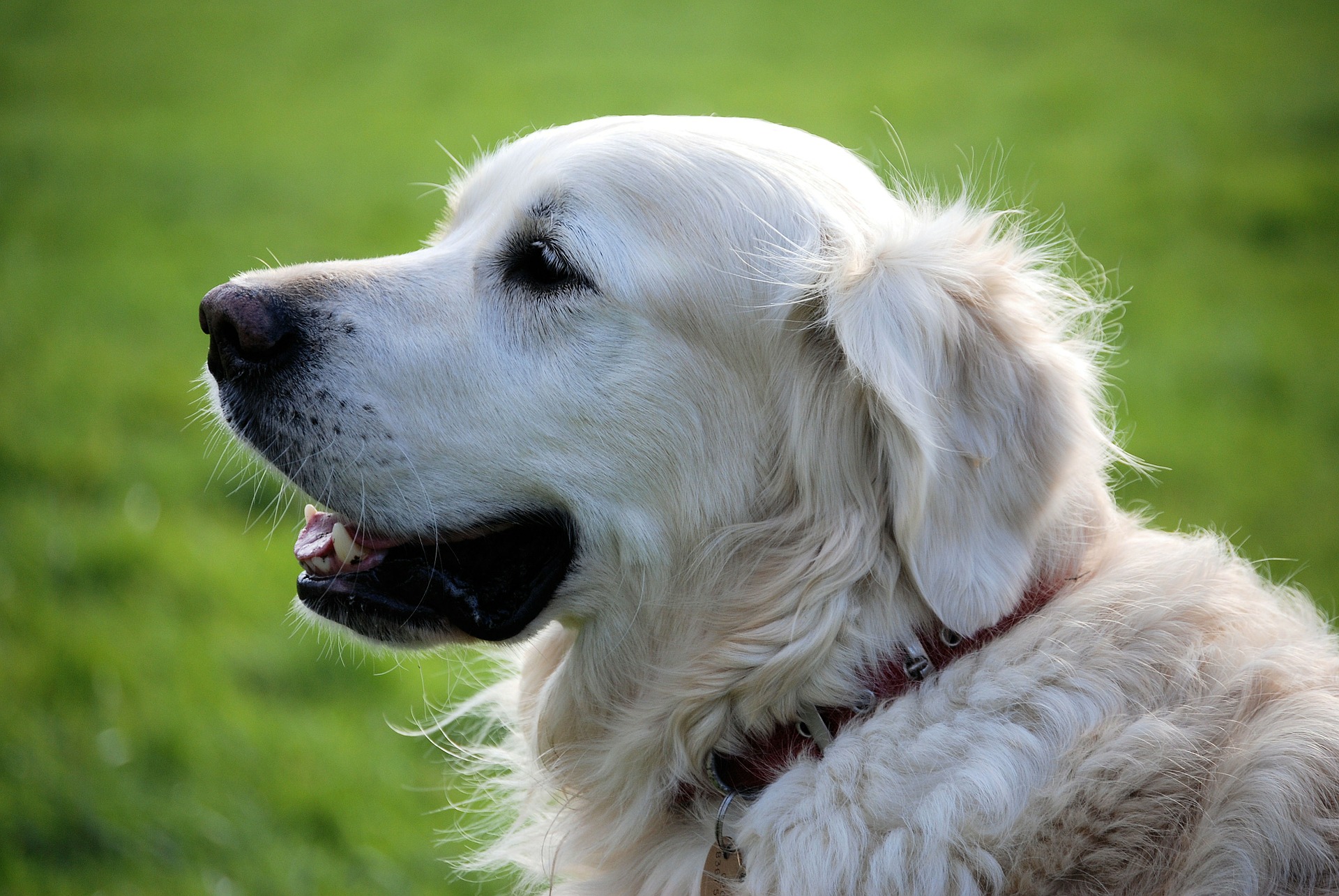
A non-surgeon colleague even wrote elsewhere that since people often don’t need surgery for an ACL tear, then we shouldn’t need it in dogs. Respectfully, this shows a basic misunderstanding of the differences in functional anatomy between dogs and humans. Let’s mention two:
. Humans are straight legged. Dogs always have their knees flexed when standing.
. The human tibial plateau angle is somewhere around 7 degrees. Dogs’ tibial plateau angles vary from around 20 to over 60 degrees, with a back-of-the-envelope average of 24 to 28 degrees in most of my tibial plateau leveling osteotomy (TPLO) patients.
How many reasonable, objective, ethical, honest reasons can you find to recommend conservative treatment as opposed to surgery?
Here are 10 consequences of untreated ACL tears:
1. Pain
Patients with a torn ACL are in pain.
Please remember that limping or favoring or babying a leg = pain.
Pets are not crazy! Holding the affected leg up or limping hurts less than putting full weight on the leg.
When the tear becomes older, pain might subside to some degree, but it stills hurts.
Another reason patients are limping is because the knee is unstable or wobbly.
2. Arthritis
We routinely notice during surgery that patients with long-standing (chronic) ACL tears have more arthritis than patients with a recent injury. This, in turn, leads to pain.
Patients with partial tears typically have less arthritis than patients with complete tears. Recent tears also regularly lead to less arthritis than older (chronic) tears.
Therefore, the sooner we perform the surgery, the better for the patient.
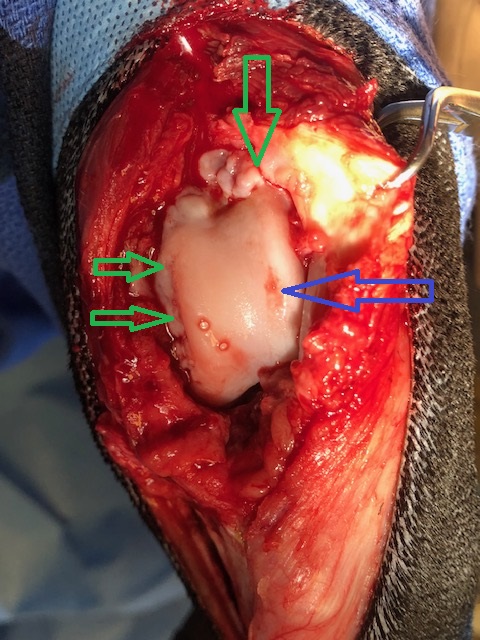
3. Scar tissue
Scar tissue is what we rely on after conservative treatment for an ACL tear. Experience proves that scar tissue alone is not enough to provide good function, at least in medium- and large-breed dogs.
Scar tissue is manifested by what we call the “medial buttress,” which can be a very prominent bulge inside a pet’s knee.
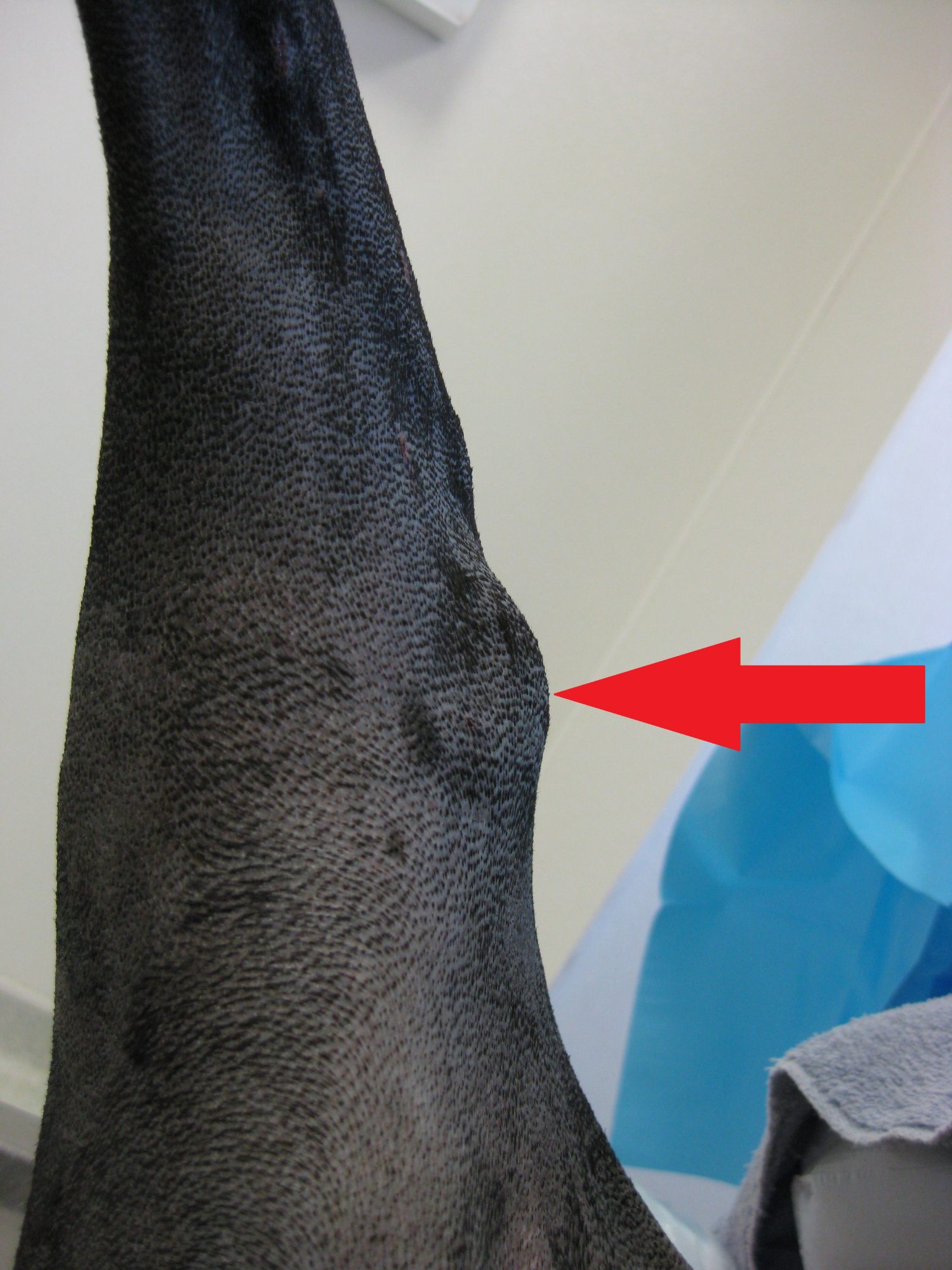
In turn, scar tissue leads to our next point.
4. Decreased range of motion
A long-term consequence of arthritis and scar tissue is a decreased range of motion of the knee.
Patients with older (chronic) ACL tears commonly experience a decreased range of motion. This might not matter much to a couch potato, but it will affect the performance of an active family pet or a working dog.
5. Muscle atrophy
Patients who favor a hind leg classically show various degrees of muscle atrophy because of poor use of the leg.
This can be assessed easily by measuring the circumference of the thigh with a simple tape measure.
6. Exercise intolerance
Obviously, a family pet or working dog will have a tough time running around with a sore knee.
Dogs with a torn ACL are reluctant to play or go for walks. Exercise intolerance or poor athletic performance classically leads to weight gain, because these pets often receive the same amount of food (and sometimes more, along with more treats).
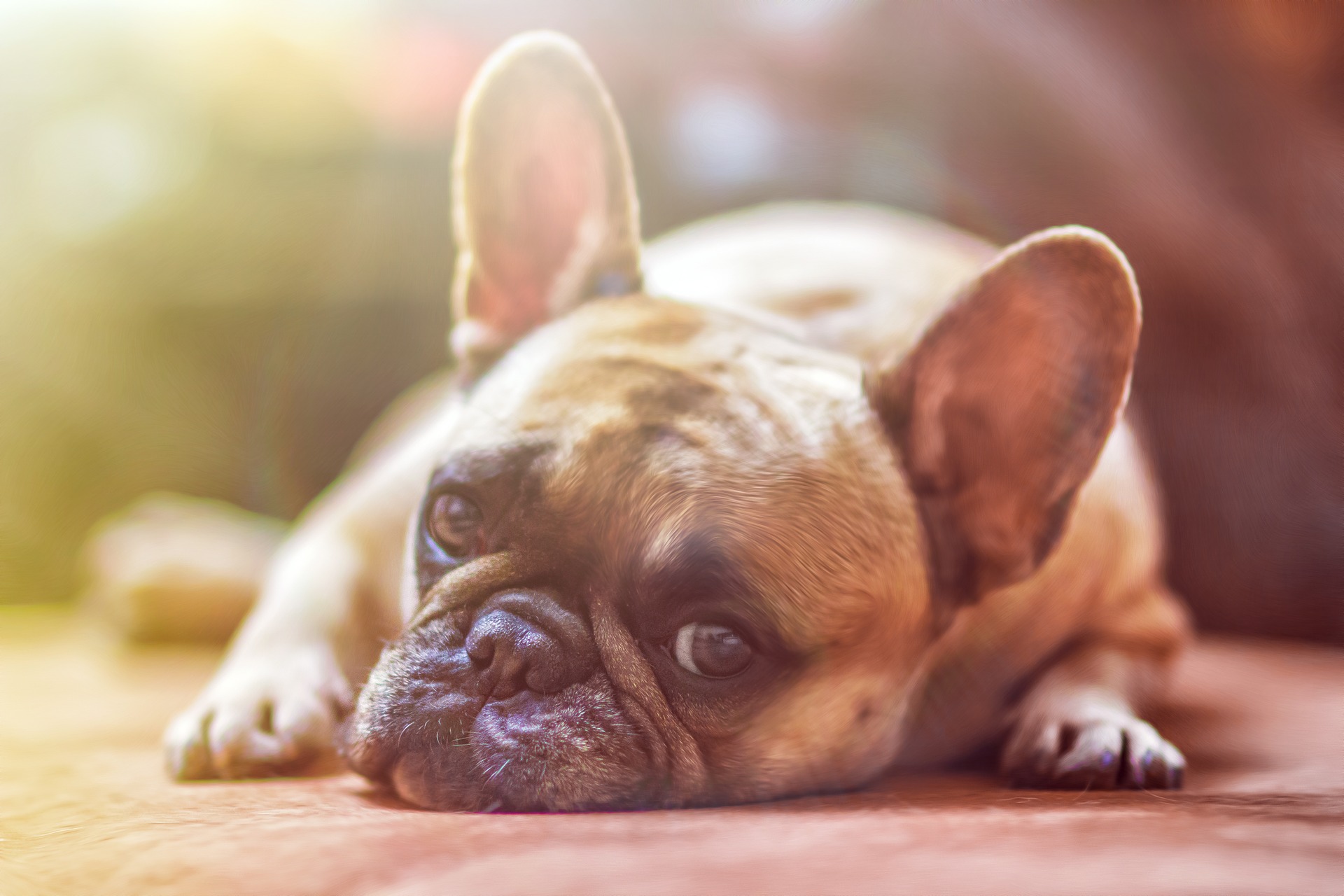
7. Weight gain
A consequence of many of the above changes is decreased activity, which invariably causes weight gain.
This is a common observation in ACL patients. Unless you decrease your pet’s food intake to match the decrease in activity, weight gain is inevitable.
8. Opposite ACL tear
Arguably, weight shifting may lead to a tear of the opposite ACL. While this might be manageable in a yorkie or a cocker, it becomes a much bigger problem with a Labrador or a mastiff. Helping a 100 lb dog who has both ACLs torn at the same time is not easy!
9. Tear of the meniscus
Instability in the knee can lead to a tear of the meniscus (see picture below), which is a pad of cartilage in the knee. This can cause even more pain.
On the opposite, once the knee is stabilized, the risk of a tear of the meniscus is minimized.
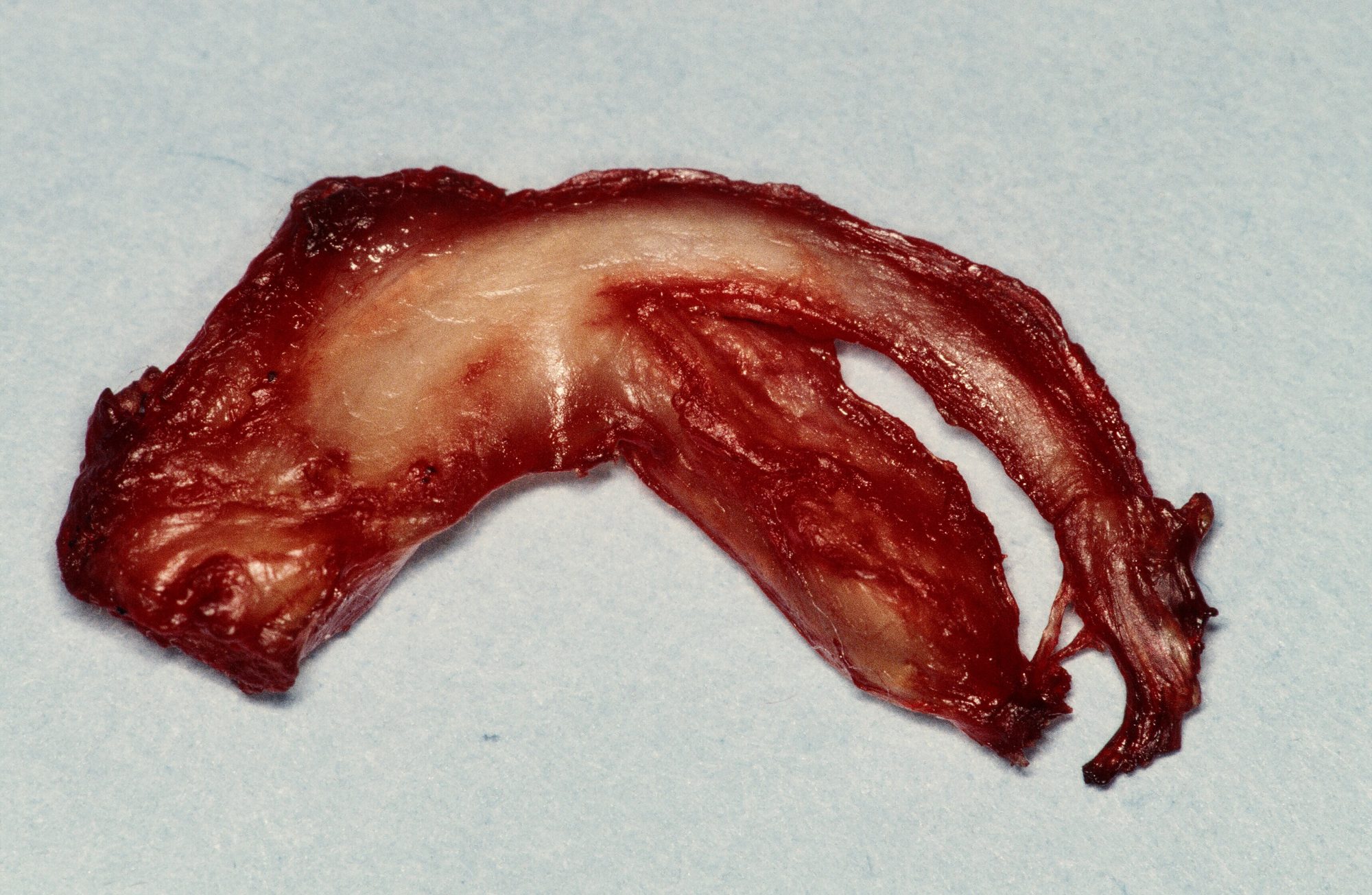
10. Distant problems
The changes in gait and posture can affect all three other legs, as well as the spine. Weight shifting may cause or exacerbate an orthopedic problem in another leg.
A doggie physical therapist told me once: “An ACL rupture is the beginning of a cascade of events in other body parts – joints, muscles – that we can’t forget.”
To a degree, some of the above changes can be used to “date” an ACL tear. From experience:
. A patient with a recent ACL tear classically is lame and painful.
A patient with an old (chronic) ACL tear typically presents with limping, pain, arthritis, decreased range of motion, muscle atrophy and weight gain. In surgery, we certainly see much more bone spurs in a dog with a chronic tear than with a recent tear.
From a surgeon’s standpoint, an ACL tear is a very fixable problem.
Sure, it is possible to live with a torn ACL. Certainly, it might be the only option if you absolutely cannot afford surgery.
ACL surgery has changed dramatically over the past few years. I now expect a return of at least 95 % of normal function in at least 95 % of my patients of any size after ACL surgery, of any type.
So it’s hard for me to believe that affected dogs, especially large ones, have (and will have) a good quality of life with an untreated ACL tear.
Phil Zeltzman, DVM, DACVS, CVJ, Fear Free Certified

Dr. Phil Zeltzman is a traveling veterinary surgeon in Pennsylvania & New Jersey. An award-winning author, he loves to share his adventures in practice along with information about vet medicine and surgery that can really help your pets. Dr. Zeltzman specializes in orthopedic, neurologic, cancer, and soft tissue surgeries for dogs, cats, and small exotics. By working with local family vets, he offers the best surgical care, safest anesthesia, and utmost pain management to all his patients. Sign up to get an email when he updates his blog, and follow him on Facebook, too!
From Florida to Pennsylvania: Mae Mae the Lab gets “a new lease on life” after tie back surgery for laryngeal paralysis
This may be one of my craziest success stories ever, and definitely my furthest traveling patient ever.
Mae Mae, a 10 year old Lab who had laryngeal paralysis (which we call “lar par”), was traveling from Florida to NY State with her owner.
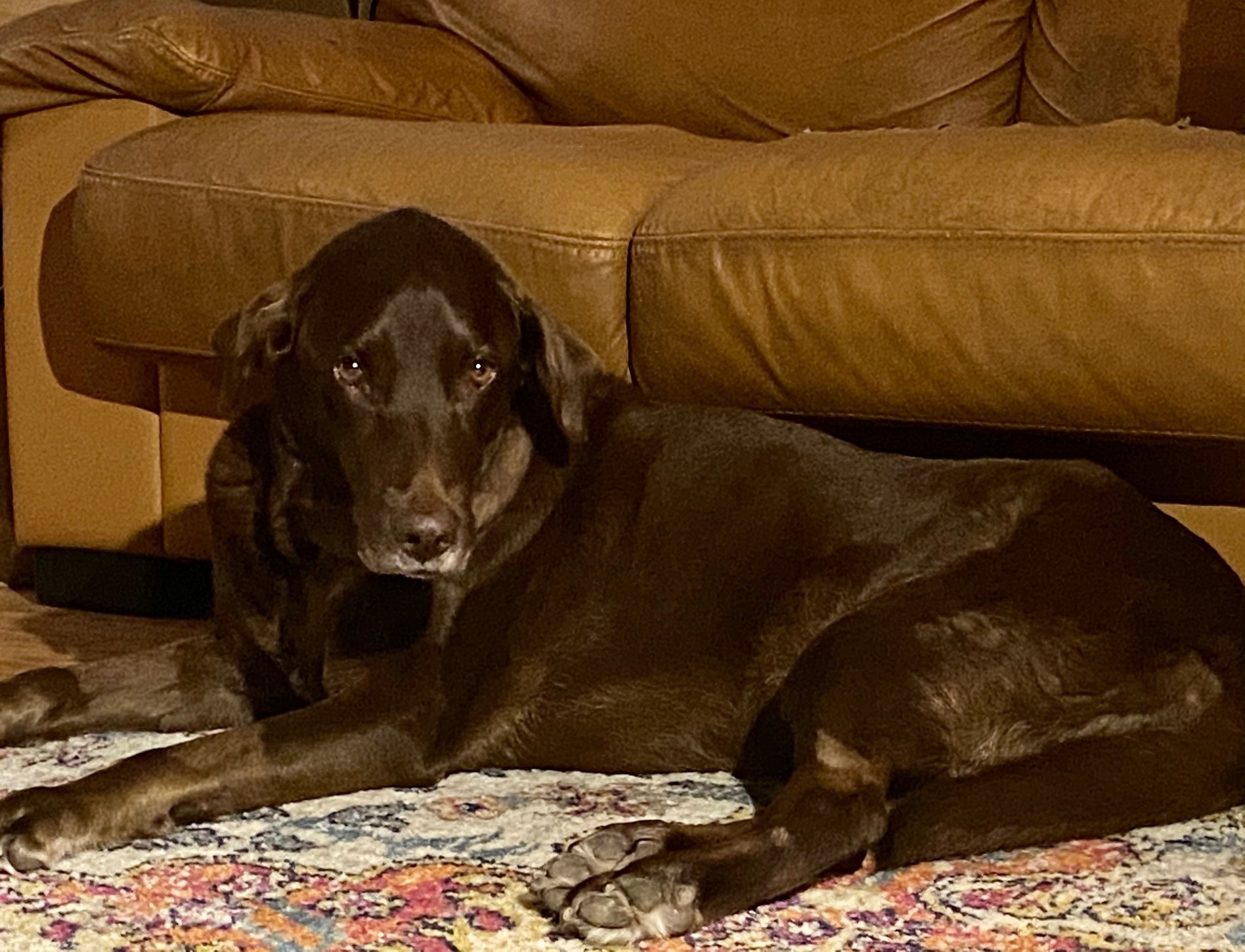
As they arrived in Pennsylvania (where I live), Mae Mae had a severe bout of suffocation. Her owner contacted me after finding me on my website. His dog was in serious trouble.
In his own words: “We were on our way from Key West (FL) to The Adirondacks (NY). As we were driving through Harrisburg, PA, around 11 pm, Mae suddenly couldn’t breathe. Her lar par had, in an instant, gone from manageable to life threatening. Fortunately, we were close to a vet ER. They saved her life. They said she was very healthy and a good candidate for lar par surgery.”
“I sent you an email and was blown away to receive an almost immediate response and then a call. I knew then that Mae Mae was meant to be there in Pennsylvania at that moment and she was meant to live.”
We scheduled Mae Mae for emergency surgery at www.BrodheadsvilleVet.com. Surgery went well. She then recovered well with her owner.
“Great night sleep, for both of us. She’s doing well.”
But then it occurred. The dreaded complication happened: aspiration pneumonia. This is a type of pneumonia due to aspiration, or inhalation, of food, water, saliva or vomit into the lungs. Mae Mae was coughing and was extremely weak. She had no appetite.
She went to the local ER (www.BartonHeights.com).
“She spent a week in the ER. She had been through so much. She had literally given up. Because of COVID, I wasn’t allowed to see her. She was finally allowed in a private room where I spent half the day with her, every day. I would lay on the floor with her for 5 hours a day and try to get her to eat a little. Every day, she made a little more progress.”
It’s true. It looked as if Mae Mae had given up. She wasn’t fighting. So we fought for her. The doctor team and the nursing team did everything by the book to treat the pneumonia: antibiotics, nebulization, antibiotics, coupage, and lots of TLC.
Her biggest cheerleader was her owner. Despite the financial commitment and the emotional rollercoaster, he stood by her side, literally, as much as possible. In the end, Mae Mae recovered and finally continue her trip to the Adirondacks.
Her owner and I are convinced that she recovered thanks to the amazing dedication of one particular nurse, which we will call Shelly.
“Mae Mae is a special soul. You (Dr Zeltzman) and Shelly provided the best medical care I have ever experienced for pet or human. I will never be able to thank you enough.
Thank you for giving Mae Mae a new lease on life. Literally it has been like watching her be reborn. She is 10 years old and I am grateful I will get the opportunity to watch this precious soul grow old.”
Then Mae Mae travelled back home in Florida.
After 1 month, she was doing well, but was still pretty weak.
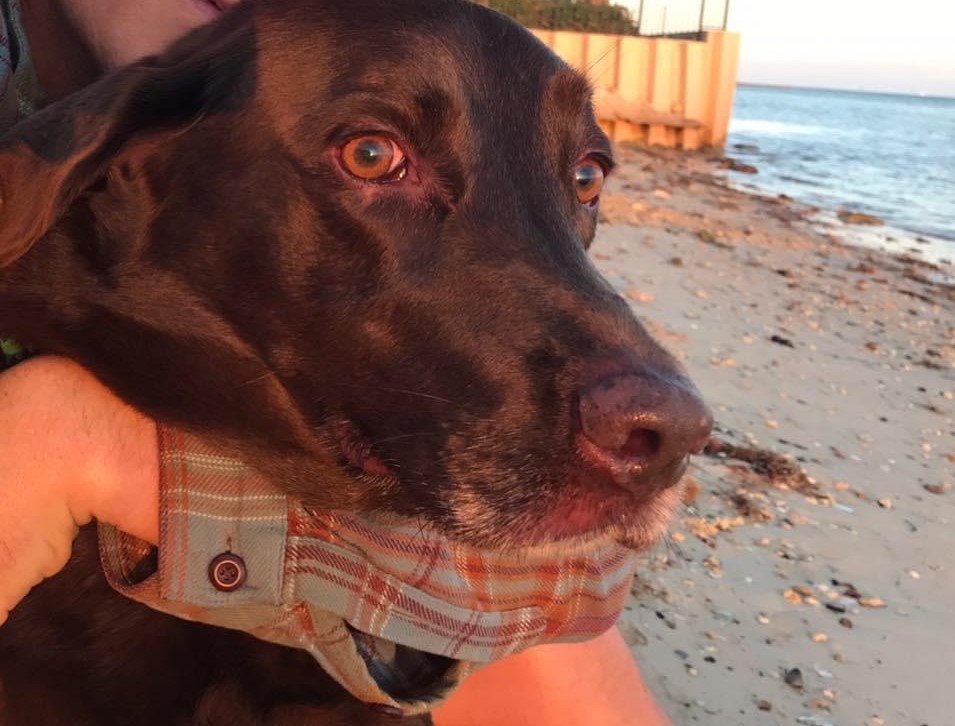
After 2 months, she is happy and much stronger, as shown in this short video: https://youtu.be/67WiKl9tpr4
Bottom line: “lar par is not a death sentence.” It’s a treatable condition. It has definite, well-known, possible complications. Even if we end up with aspiration pneumonia, most dogs who are treated aggressively can overcome this aggressive and potentially deadly complication.
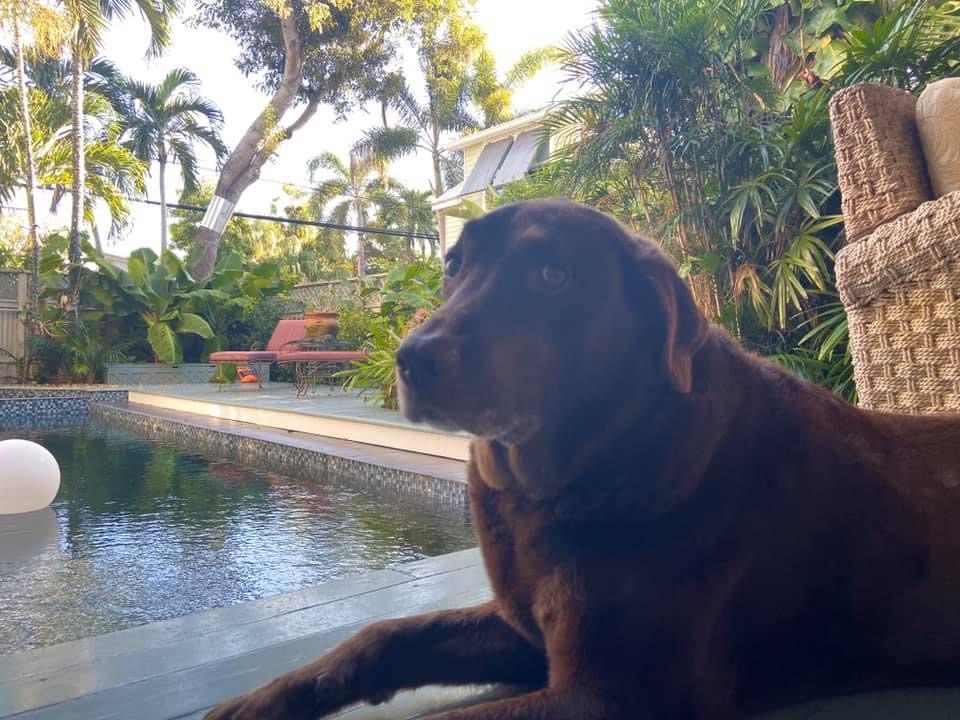
Thanks to her owner’s amazing dedication, Mae Mae can breathe easy in Key West, where she enjoys a life of rest, walks on the beach, good food and puppy love.
Phil Zeltzman, DVM, DACVS, CVJ, Fear Free Certified

Dr. Phil Zeltzman is a traveling veterinary surgeon in Pennsylvania & New Jersey. An award-winning author, he loves to share his adventures in practice along with information about vet medicine and surgery that can really help your pets. Dr. Zeltzman specializes in orthopedic, neurologic, cancer, and soft tissue surgeries for dogs, cats, and small exotics. By working with local family vets, he offers the best surgical care, safest anesthesia, and utmost pain management to all his patients. Sign up to get an email when he updates his blog, and follow him on Facebook, too!
Laryngeal paralysis is not a death sentence
Laryngeal paralysis (aka “lar par”) is a common condition in dogs (and rarely cats). What follows are my thoughts about the condition, its treatment and its outcome. They are based on recent science, and many years of experience treating lar par.
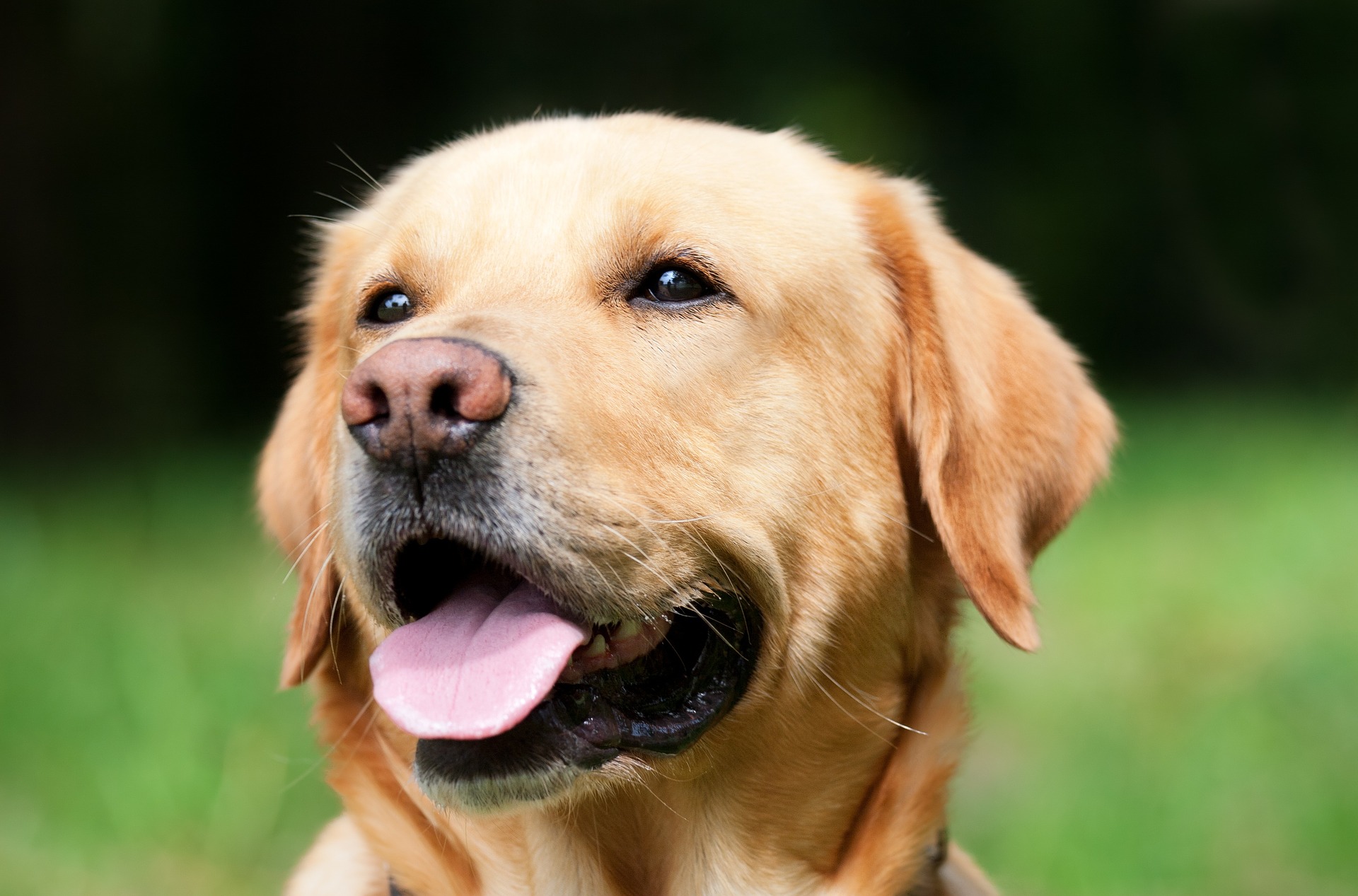
What is Laryngeal Paralysis?
Laryngeal paralysis is a condition that severely affects a pet’s breathing.
In the veterinary world, we call it “Lar Par” in short. A few people call it LP.
The larynx (please note, it is larynx and not “lar-nynx” as many people call it…) is the medical name for the voice box. If you’ve ever had laryngitis, then your very own larynx was irritated. The larynx is also the entrance to the wind pipe (or trachea) and, beyond, to the lungs.
Besides making all kinds of noises, the job of the larynx is to close off after we inhale, open up when we inhale, and again shut off when we eat and drink so we don’t “swallow the wrong way.”
When laryngeal paralysis occurs, none of these things happen. Taking a deep breath becomes impossible. The poor dog literally suffocates.
Who can be affected?
The typical patient is an older large breed dog. The poster child is the Labrador.
Most dogs are over 10 years of age.
Males are affected 2-4 times more often than females.
There is a hereditary or congenital form of Lar Par, which can affect Bouviers des Flandres, Huskies and Dalmatians. In those rare cases, young dogs, 1 year or younger, are affected.
Lar Par has also been described in small to medium dogs, as well as cats.
To avoid posting a long list here, I’ve shared the list of breeds I’ve treated over the years at the bottom of this article*.
What happens?
Lar Par occurs because the nerves that control the muscles which act on the cartilages of the larynx are diseased.
Typically, the condition starts on one side (“unilateral” paralysis or hemiparesis). If your dog is an athlete or a working dog (racing, agility, police dog, serious hiking, Search And Rescue), you may notice breathing difficulties. But if your dog is a family pet or a couch potato, you probably won’t notice much.
Only when the condition affects both sides of the larynx (“bilateral” paralysis) will most pet owners realize that there is a problem.
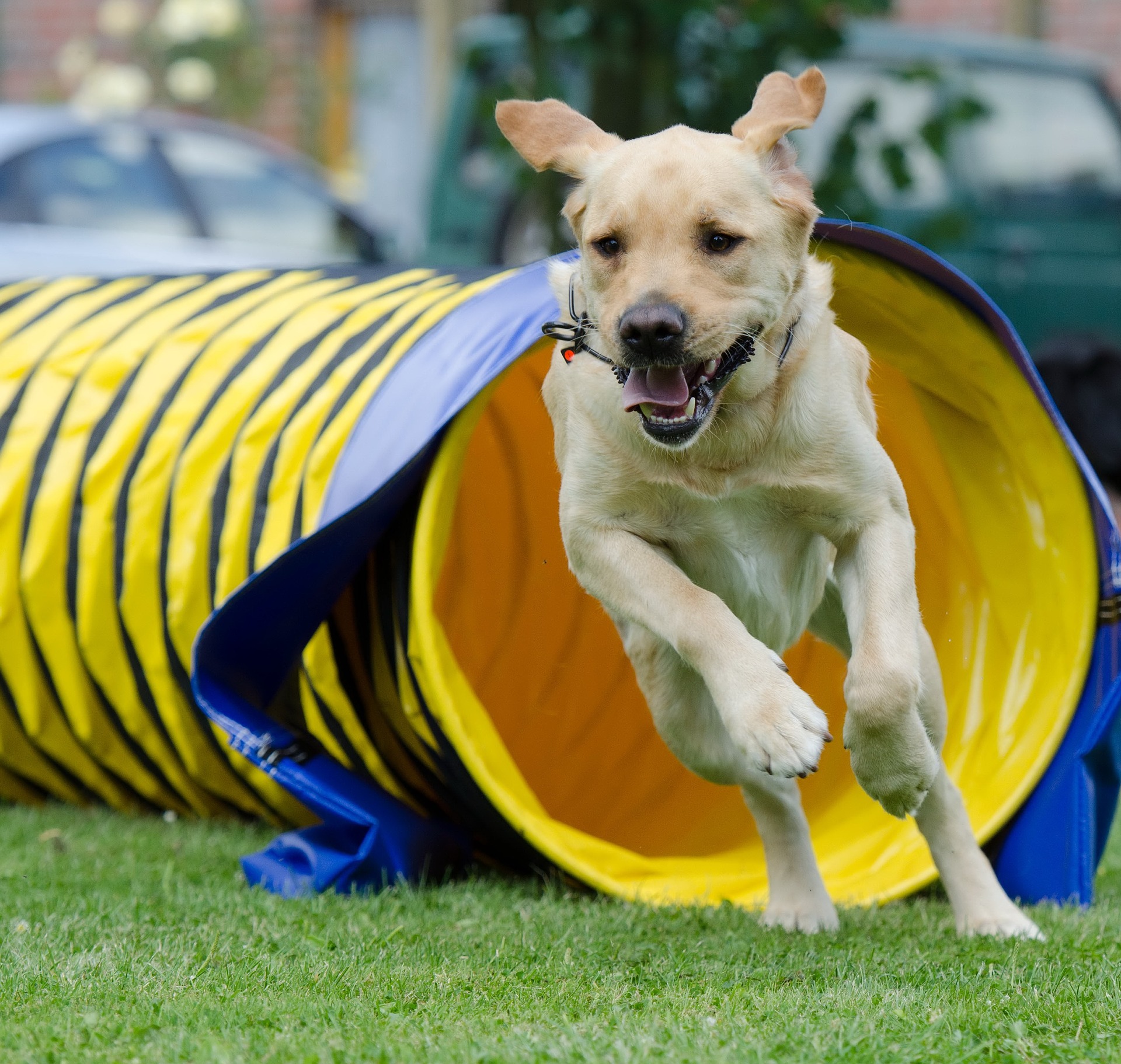
What causes Lar Par?
Most of the time, we don’t know. This is called “idiopathic” Lar Par.
Occasionally, we find an underlying cause, such as hypothyroidism (a lazy thyroid). This is somewhat controversial, since hypothyroidism is common in older Labs and Goldens anyway. That said, treating hypothyroidism will never correct Lar Par. So we recommend treating hypothyroidism because of the other consequences, not because it helps or cures Lar Par.
Rarely, Lar Par is due to trauma, cancer, generalized diseases of nerves or muscles, or previous surgery (e.g. on the trachea or the thyroid gland).
What are the signs?
Lar Par is a very stressful condition for the patient — who obviously doesn’t understand what is going on. These dogs literally suffocate. It’s a terrible and terrifying condition.
Typically, the signs are progressive. The dog pants without exercising, has a noisy and labored breathing, and gets tired quickly during regular walks. Owners may notice that their dog’s voice changes and sounds hoarse.
Unfortunately, because Lar Par most often occurs in older dogs, the signs are often blamed on old age and arthritis… which delays treatment.
Therefore, Lar Par patients are often presented to a vet when they are in real trouble, i.e. when they can barely breathe. Most often, this happens as the weather becomes hot and humid, but I see these patients year-round, even in the Winter. Overweight or obesity worsens the condition.
At worst, the condition can become life-threatening.
How does my vet know my dog has Lar Par?
An experienced vet or surgeon will suspect Lar Par the second a patient walks into the exam room or on a 10 second video. But to confirm the suspicion, an exam of the larynx under sedation is necessary.
Before this can be done safely, we perform full blood work and chest X-rays. The purpose of blood work is to ensure the safety of sedation and anesthesia. The goal of chest X-rays is to know whether the patient has aspiration pneumonia (more on this below). The same X-rays can show if the patient as mega-esophagus, ie an enlargement of the esophagus – the tube between the mouth in the stomach. Finally, these X-rays confirm that there is no hidden cancer in the chest.
Under “light” sedation, the mouth is opened and the larynx is observed. With Lar Par, the folds of the larynx will not open and close as the patient breathes in and out. The folds remain closed – paralyzed.
Light sedation means that it should be heavy enough so the mouth can be opened, but mild enough for the patient to breathe spontaneously.
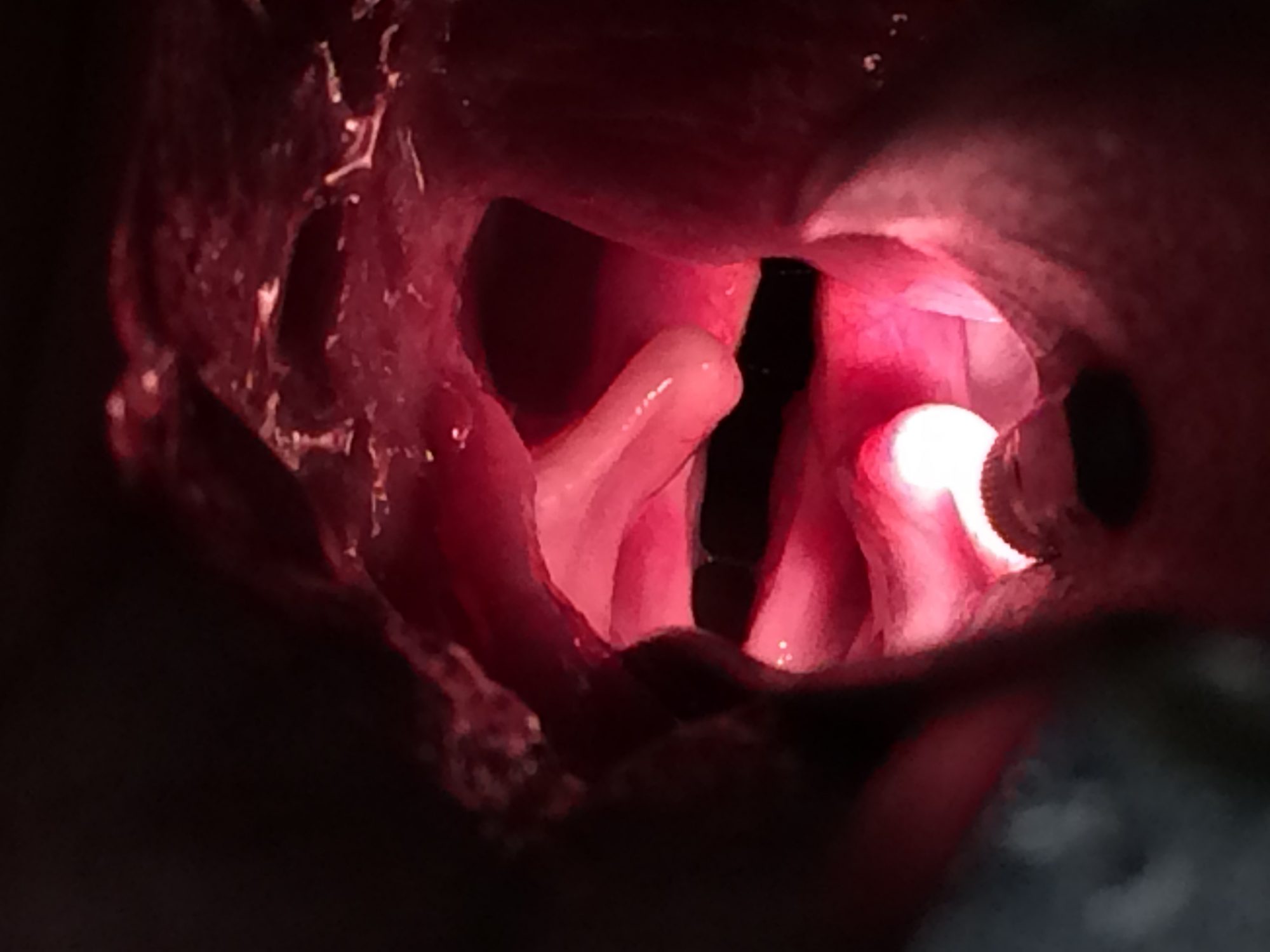
What is the emergency treatment?
When a patient presents on an emergency basis, two important goals are to calm the patient, and allow enough oxygen to get on board.
This requires sedation (acepromazine is often the drug of choice). Oxygen can be delivered by many different ways. In extreme cases, the patient needs to be anesthetized and a tube is placed down the throat to deliver oxygen.
My absolute least favorite way of stabilizing a Lar Par patient in crisis is an emergency tracheostomy, although it may be the only option in very rare cases.
If the patient’s temperature is seriously high from overheating, emergency measures are taken to lower it.
Once the patient is stabilized, surgery is the best treatment. Nothing else will work as successfully.
What happens in surgery?
The goal of surgery is to permanently open up the larynx to allow more air to get in.
There are two main types of surgery: intraoral (i.e. surgery is done via the mouth) and extraoral.
These days, the vast majority of surgeons will choose the extraoral approach, i.e. surgery is done through the left side of the neck. Most often, they will typically do a laryngeal “tie-back” procedure, a.k.a. arytenoid lateralization, on ONE side.
Typically, surgery involves placing 2 heavy nylon sutures (i.e. permanent) to open up the left side of the larynx. Only one side (again, typically the left) is opened up to minimize the risk of aspiration pneumonia.
Doing surgery on both sides dramatically increases the risk of aspiration pneumonia… and is simply not necessary.
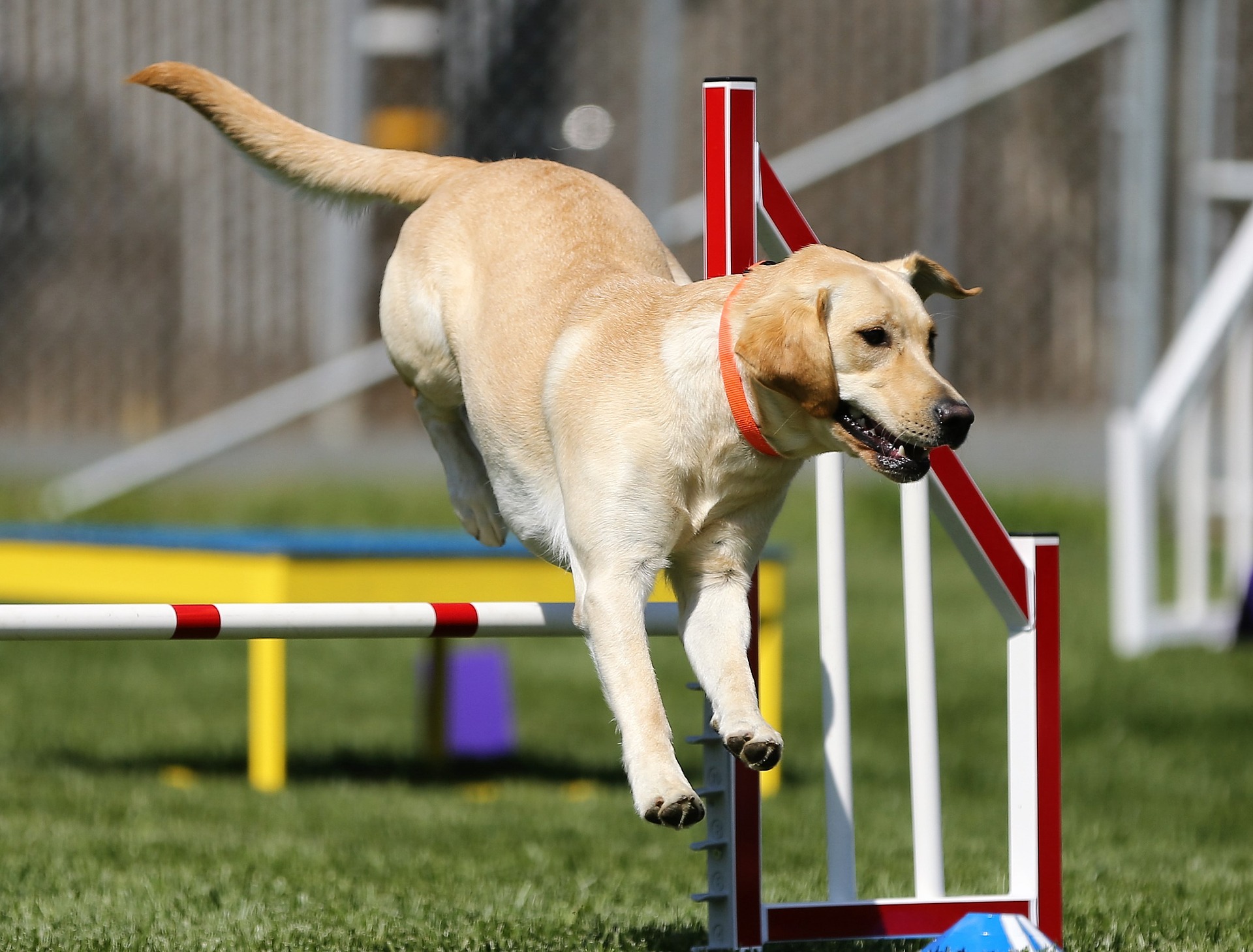
What is the outcome?
In good hands, the outcome is typically good.
Theoretically, surgery provides instant relief: The patient can finally breathe. Then of course (s)he needs to recover and heal after surgery.
Clients often worry about doing this surgery in their (typically) older dog. The fact is, more lar par patients are over 10 years old.
My standard replies are:
1. Age is not a disease.
2. Lar Par is not a death sentence. It’s a bump along the road, which shouldn’t affect the patient’s life expectancy as long as they don’t get deadly aspiration pneumonia.
What are the complications?
. Coughing is expected after surgery, typically after eating and mostly after drinking. That’s a good thing, as it will hopefully prevent the dog from “swallowing the wrong way.”
. The voice may change, and barking disappears. These are not really complications. They are standard consequence of the tie back procedure you need to be aware of.
. Failure of the nylon sutures and/or a condition of the cartilage of the larynx (too soft or too brittle) are rare but severe complications, which is why we insist on confinement, peace, and quiet after surgery.
. The dreaded complication is Aspiration Pneumonia (also known as AP). This is a type of pneumonia due to aspiration, or inhalation, of food, water, saliva or vomit into the lungs. Thankfully it is an uncommon complication.
. GOLPP (geriatric onset laryngeal paralysis polyneuropathy) is not really a complication of lar par, but something to be aware of, especially in Labs. More information can be found here:
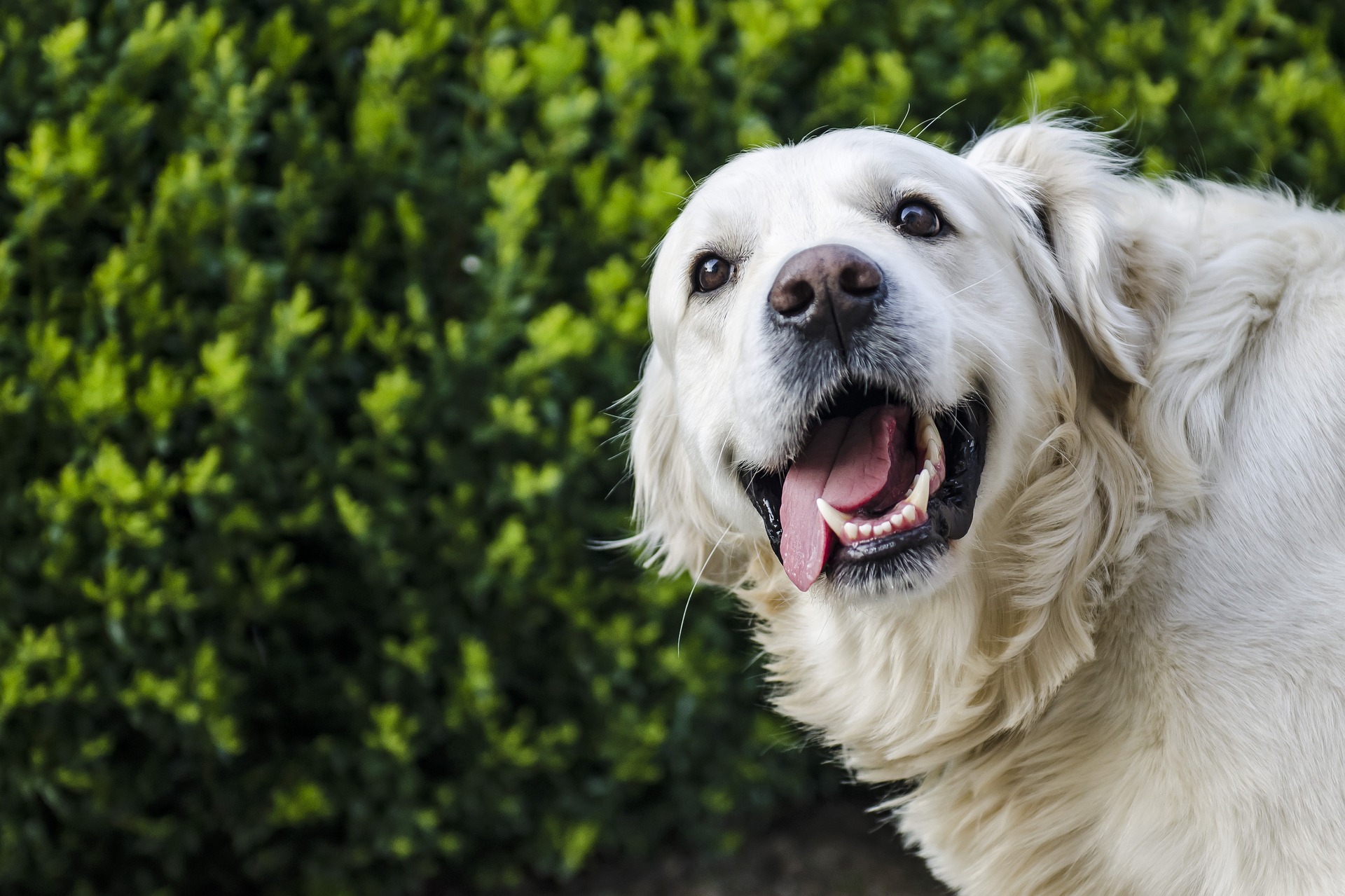
What if my pet gets aspiration pneumonia? Then what?
It’s crucial that aspiration pneumonia is caught early.
It is an aggressive disease that must be treated aggressively.
We look for 4 criteria: coughing, lethargy, poor appetite and a fever.
If you ever suspect AP, time is of the essence. A vet should see the patient ASAP, listen to the lungs and take chest X-rays to confirm the diagnosis. Treatment involves hospitalization, IV fluids, strong antibiotics, nebulization and a type of physical therapy called coupage.
What’s new with Laryngeal Paralysis?
We now give patients 2 anti-vomiting drugs (metoclopramide and Cerenia) and an antacid before surgery.
Then they stay on cisapride (a daily pill) for life, after surgery. The hope is to decrease the risk of vomiting by helping move food downward.
These days, we don’t make the opening in the larynx as big as we used to, just enough for the patient to breathe comfortably. This is clearly art more than science, and you can see how experience comes into play. What’s the downside? The patient will likely have a noisier breathing, as air goes through a smaller opening. But again, as long as the patient can breathe comfortably, we don’t mind. As I always tell my clients, “I don’t treat noise, I treat dogs.”

What do I need to do at home after surgery?
This will depend on your surgeon’s recommendations. In my practice, we recommend:
• Strict rest for 2 months to allow proper healing with scar tissue
• Soft food (“meat balls”) for 2 weeks
• Not too much water intake at once
• Pain killers for 7 days
• Cisapride for life (not all surgeons do that)
• Weight loss (these patients are often chubby), or weight control as needed
• A harness instead of a neck collar
The only restriction is swimming: your dog will have a permanently open larynx, with no possibility of closing it off, should (s)he swallows water. There is therefore a risk of aspiration at best, and drowning at worst.
What’s the bottom line?
Overall, Lar Par is a stressful condition for the dog and a stressful situation for the owner. Fortunately, in most cases, results of Laryngeal Paralysis surgery are good to excellent.
Phil Zeltzman, DVM, DACVS, CVJ, Fear Free Certified
* Here is a list of breeds I’ve treated over the years:
Labradors and Lab mixes are # 1 by very very far.
Golden retriever
Pitbull
Greyhound
Shepherd (and mixes)
St. Bernard
Britany spaniel
Husky (young or old)
Sheltie
Beagle
Akita
Mastiff
Boxer
Bulldog (yes, really)
Pomeranian
Wheaten Terrier
Border collie
Springer spaniel
Chessie (Chesapeake Bay Retriever)
Bassett hound

Dr. Phil Zeltzman is a traveling veterinary surgeon in Pennsylvania & New Jersey. An award-winning author, he loves to share his adventures in practice along with information about vet medicine and surgery that can really help your pets. Dr. Zeltzman specializes in orthopedic, neurologic, cancer, and soft tissue surgeries for dogs, cats, and small exotics. By working with local family vets, he offers the best surgical care, safest anesthesia, and utmost pain management to all his patients. Sign up to get an email when he updates his blog, and follow him on Facebook, too!
Does the length of my pet’s incision matter?
Clients often ask me how long their pet’s incision will be after surgery.
Does the length of a pet’s incision matter?
The short answer is no. When it comes to incisions, it’s not the length that matters, but the care taken to keep it clean and protected.
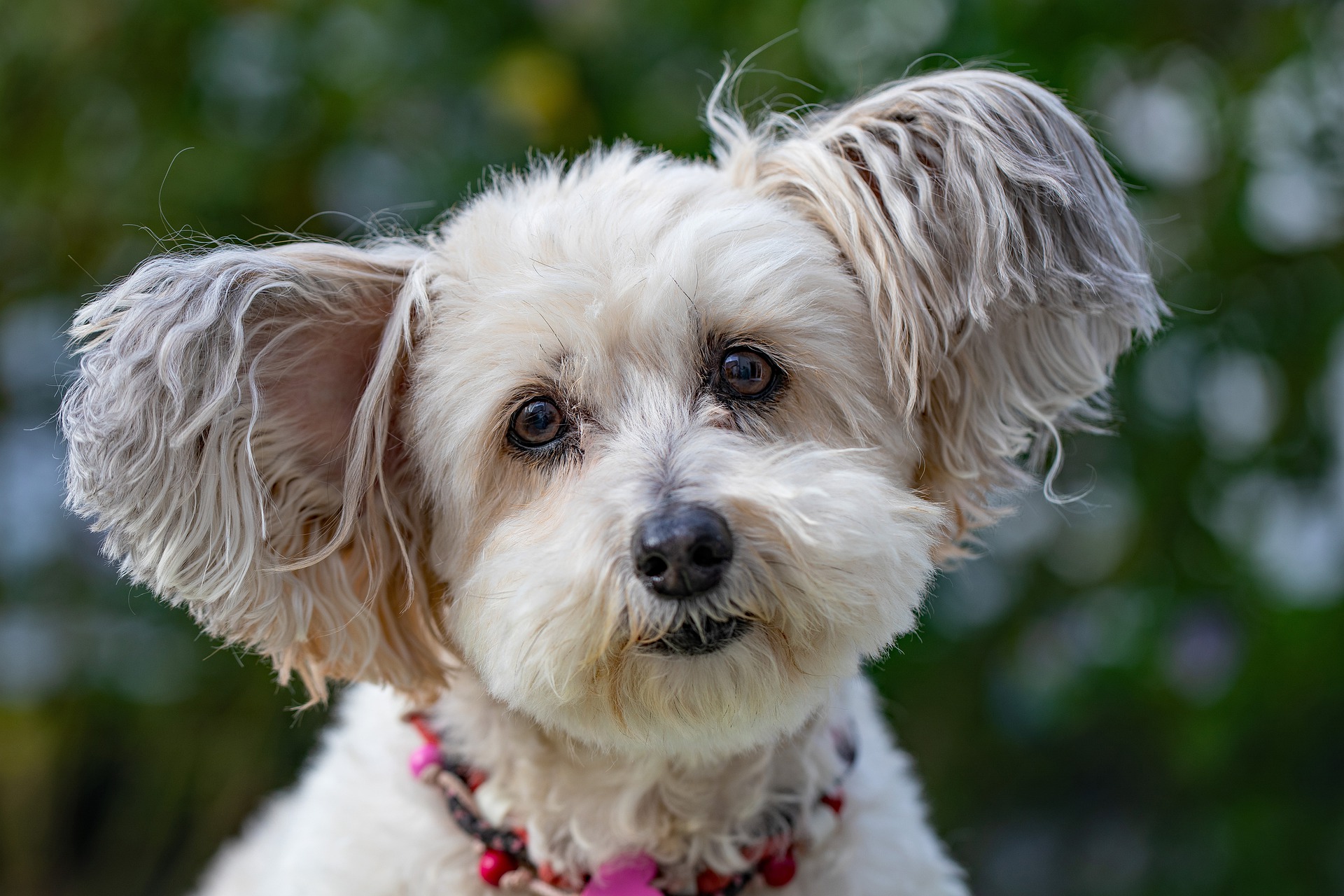
Incisions heal side to side, not end to end, meaning that a 1 inch incision and a 10 inch incision heal at the same pace – most often 2 weeks.
It’s very predictable.
It pretty much would be that simple, if it weren’t for pet’s obsession with licking their “wound.”
Why do they do it? It’s an instinct. They can’t help it. They don’t know better.
But people should…
In addition, the incision area may become itchy as fur grows back. A pet’s natural response to itchiness or anything unusual is to lick or chew.
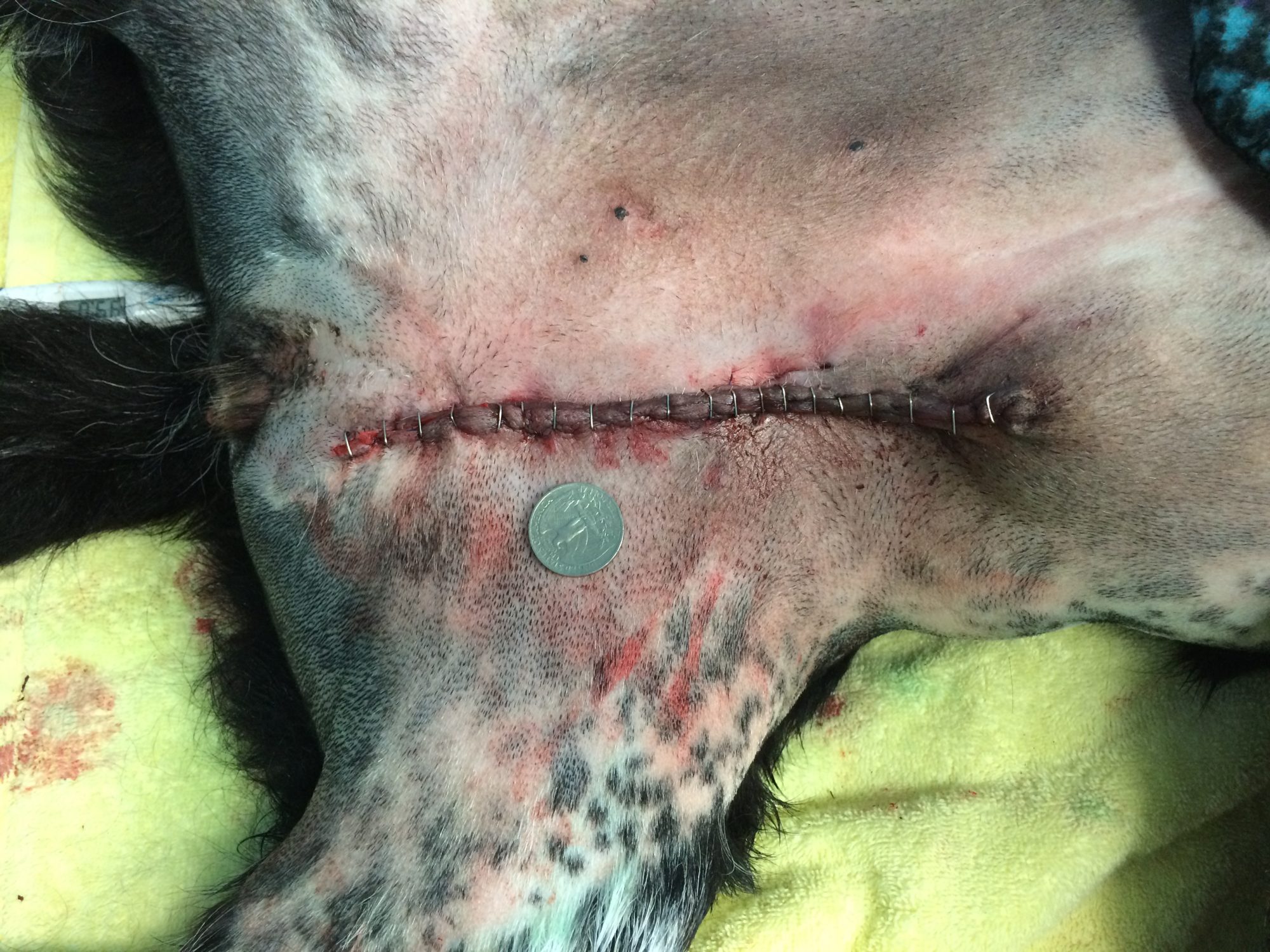
A few simple recommendations need to be followed to ensure that the incision heals without complications.
. Activity should be kept to a minimum. The skin and underlying tissues need time to heal. During healing, they cannot be stretched or moving constantly because motion slows healing down.
This is the reason why strict rest is critical for proper healing. Stairs, furniture, running, jumping and playing must be prevented during healing. Walks should be minimized to no more than 5 minutes, on a short leash, and for bathroom duties only.
. You should inspect the incision once or twice daily to make sure it looks good. If you see drainage, you can clean it with a soft cloth and tap water. Avoid using antiseptics of any type (peroxide, alcohol, cleaning solutions etc.) or triple antibiotic ointment. Only tap water. Then gently blot it dry.
. Speaking of drainage, what should you expect? Initially, some bleeding is possible. But then the red should turn to pink, and the pink should turn to clear (or light yellow). Then it should stop. Many times, you will not see any drainage.
If you see anything different, including a whitish, yellowish or greenish discharge, please get in touch with your vet or surgeon ASAP.
. You may also see bruising and swelling, both of which are common after surgery, just like in humans. It should decrease over time, then disappear.
. Whether stitches, skin glue or staples were used, the end result is the same: the edges of the skin should touch each other, and progressively fuse.
. The incision and surgery area should not smell much. If you notice a strong or foul smell, please get in touch with your vet or surgeon ASAP.
The next picture is a bit graphic, so please skip it if you have a sensitive stomach. It is not for the faint of heart.
. Most pet go home with a plastic cone (aka E-collar or Elizabethan collar) around their neck. It should be kept on at all times (24/7), even to eat, to prevent your pet from licking or chewing at the incision, which could cause it to open up and possibly get infected. We don’t use a cone when the incision is in the mouth or in a location where the edge of the cone might cause harm by rubbing on it. Throat and neck incisions come to mind.
REMINDER: THE NEXT PICTURE IS A BIT GRAPHIC. YOU HAVE BEEN WARNED.
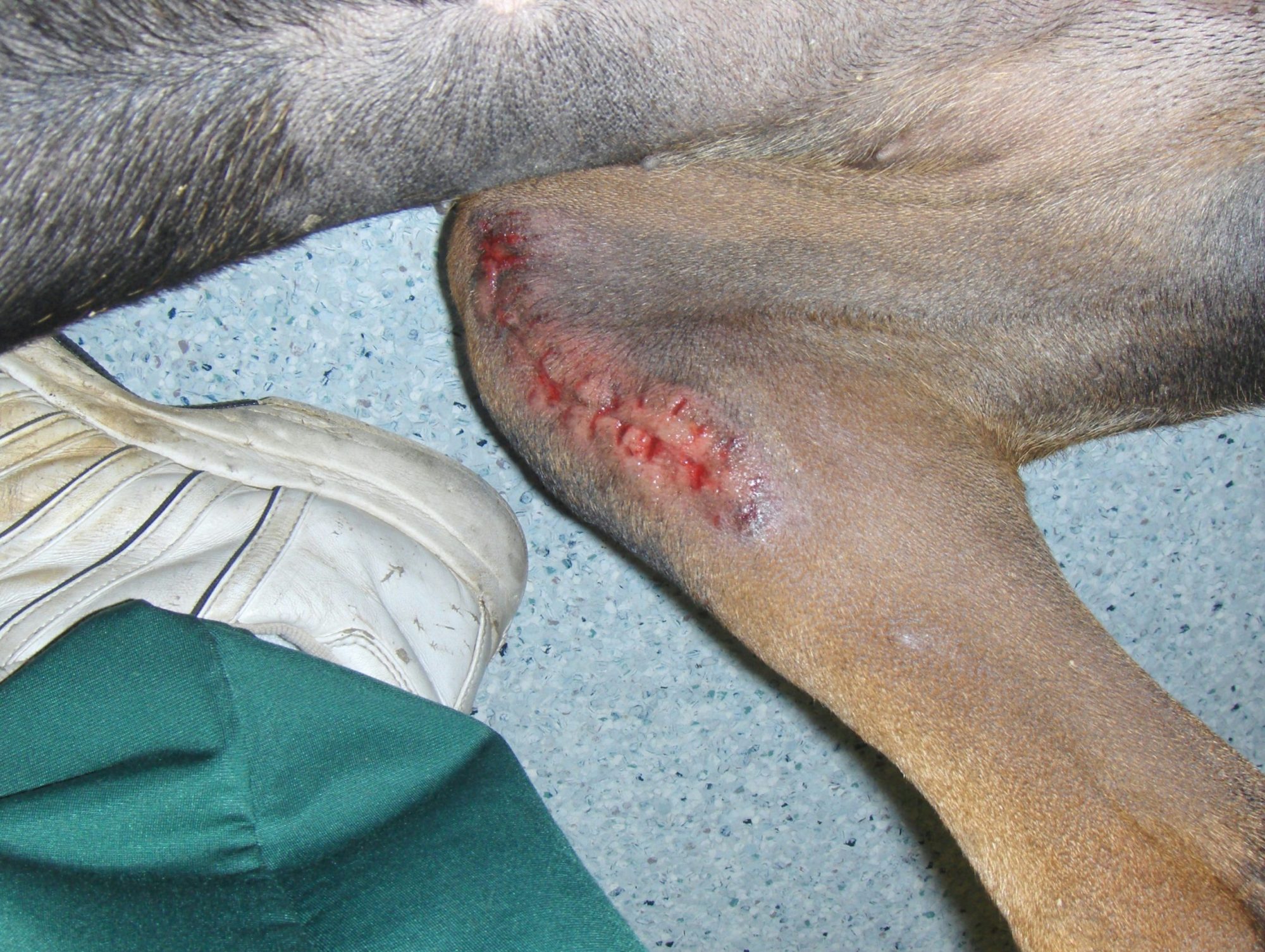
(caption: this dog was allowed to lick the incision, which didn’t open up but looks rough 2 weeks after surgery)
. Since your pet shouldn’t be able to lick the incision, you also need to prevent other pets from licking. We don’t know why they have this bizarre habit… we just know they do. So pets recovering from surgery should be separated from other pets so they can heal peacefully.
. You may have heard an urban legend that claims that pet saliva helps with healing. It’s a myth!
Is it important to remember that your pet’s tongue has been in all kinds of weird places. Yes, including that place!
Therefore, their tongue is covered in bacteria, some of which are very aggressive. When you smear a surgical incision with fecal bacteria… guess what can happen!
The next picture is very graphic, so please skip it if you have a sensitive stomach. It is not for the faint of heart.
. Of course, the other risk of licking or chewing is opening up the incision, partially or entirely. Sadly, that may require another surgery to stitch it closed. Ironically, it will require another anesthesia, more money… and another plastic cone!
REMINDER: THE NEXT PICTURE IS VERY GRAPHIC. YOU HAVE BEEN WARNED.
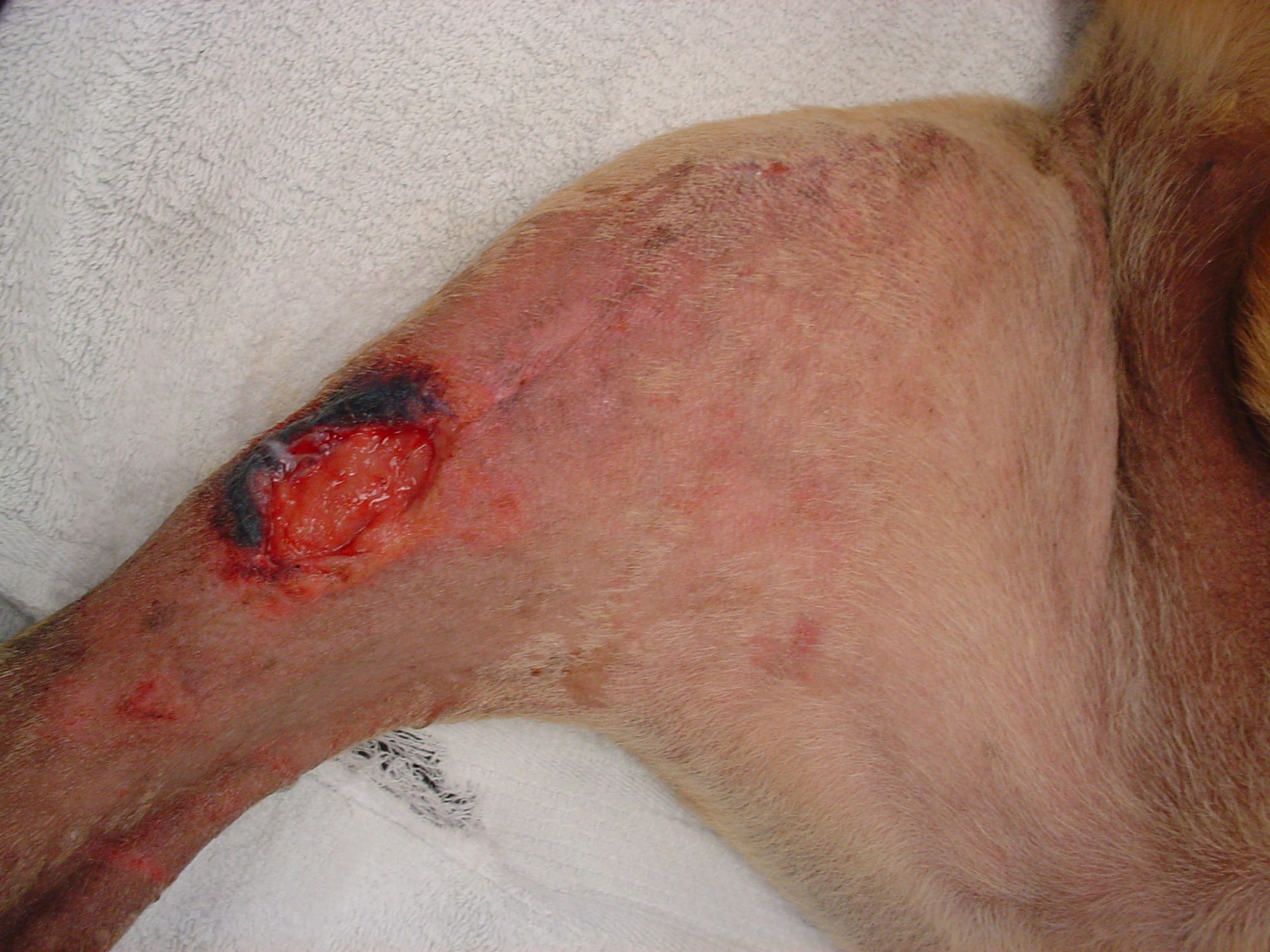
(caption: This dog was allowed to lick the incision, which opened up partially. A second surgery is needed to clean it up and close it. In the end, it’s always the pet who pays the price…)
. We cover some incisions with a Band-Aid, not to replace the plastic cone, not to protect them from the tongue, but to protect them from the environment. This may reduce the risk of infection.
So the rules as simple: prevent licking of the incision, keep your pet strictly rested, and you will give your pet the best chance at healing completely and uneventfully, the first time around, no matter the type of surgery.
Phil Zeltzman, DVM, DACVS, CVJ, Fear Free Certified

Dr. Phil Zeltzman is a traveling veterinary surgeon in Pennsylvania & New Jersey. An award-winning author, he loves to share his adventures in practice along with information about vet medicine and surgery that can really help your pets. Dr. Zeltzman specializes in orthopedic, neurologic, cancer, and soft tissue surgeries for dogs, cats, and small exotics. By working with local family vets, he offers the best surgical care, safest anesthesia, and utmost pain management to all his patients. Sign up to get an email when he updates his blog, and follow him on Facebook, too!

